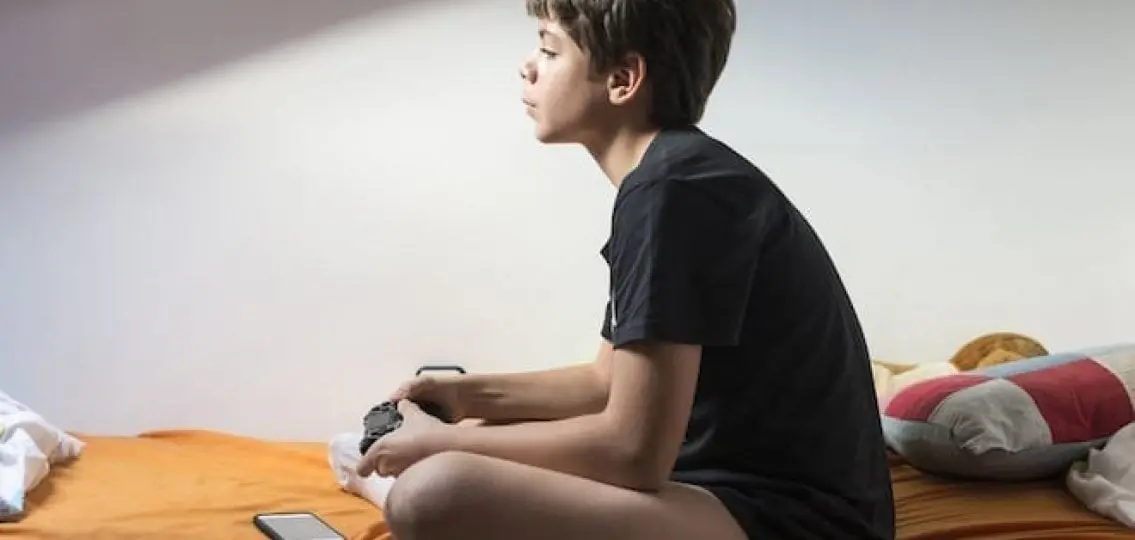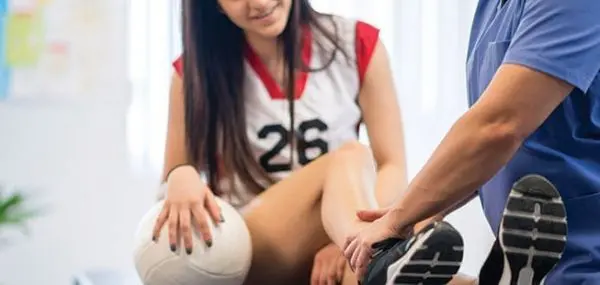Is technology hurting your kids? What is Text Neck? What about Blackberry Thumb?
Adolescents who spend hours each day using electronic devices can be at risk for repetitive strain injuries. We spoke with Dr. Scott E. Van Valin, pediatric orthopedic surgeon at Children’s Hospital of Wisconsin in Milwaukee, about avoiding technology injuries in teens.

Q: What are repetitive strain injuries?
Valin: These are musculoskeletal injuries that we see from doing the same movement over and over again. It describes discomfort and, occasionally, loss of muscle strength and function. Typically, these kinds of injuries affect the neck, back, hands, and arms. We saw this phenomenon a few years ago described as “Blackberry Thumb” or “Text Neck.”
Q: Are teenagers at risk of developing Texting Thumb from cellphones?
Valin: Believe it or not, we are seeing fewer and fewer of these kind of repetitive thumb, hand, and forearm strain injuries in adolescents. The Blackberry Thumb that was such a problem for a few years has really abated, due to a combination of factors. Most devices now have easy touch keyboards that don’t require users to exert quite so much pressure. And you can use other fingers on smartphones instead of just thumbs. Plus, Wii and Nintendo controllers are more ergonomically designed. Blackberry Thumb, frankly, is a much bigger problem in adults than in adolescents.
Q: What tech-related injuries are you seeing now?
Valin: The biggest thing we treat adolescents for is what we call “Text Neck” or “Phone Neck.” It’s poor posture caused by people tilting their heads down, either when they use their phone to text or when they cradle the phone between their head and shoulder. Most people aren’t thinking about how heavy their head is—around 10 lbs—and the strain that looking down puts on their neck. If you are sitting up straight, your spine, shoulders, and ears should be aligned and form a straight axis.
When you’re spending hours texting, hunched over your phone, your spine is curving forward, your spinal column is arched, and you are putting a lot of strain on the cervicothoracic junction—that bump at the very bottom of your neck where the neck connects with the upper back. The more time spent looking at your phone in this posture, the more repetitive strain injury and associated neck pain you’re going to experience.
Q: How much screen time is too much?
Valin: Interestingly, there haven’t been any studies yet to determine that answer. The American Academy of Pediatrics, however, recommends no more than two hours a day of using your phone or tablet. And this can be an additive problem: hours and hours of cellphone usage—combined with slouching and those really heavy backpacks many teenagers carry—can lead to these kinds of musculoskeletal problems.
Q: How can teenagers avoid neck strain?
Valin: Make sure your desk is set at the proper depth. If you sit in front of a computer for hours at a time, you can get neck and back pain or sore wrists if you don’t have your chair or keyboard at the right height. The proper measurements are available on the internet. Look forward while you type and not down.
Parents, take a photo of your teenager and show them if they are slouching or if their neck is leaning forward. Remember, you want your ears to be positioned basically over your shoulders so your spine is correctly aligned. Sometimes people don’t even realize they have bad posture until they see what they look like.
Q: How should you treat any soreness or pain?
Valin: Physical therapy is the best way to treat repetitive strain injuries. For neck or back pain, we encourage postural awareness. Stay active; increase your core strength and also your back muscles. Persistent posture problems can lead to back pain and even spine surgery in the future, so be aware before it’s a significant health issue.
Q: Have you seen any other injuries as a result of tech use?
Valin: There is a whole separate category of tech-related injuries that affect adolescents. A national database tracks tech-related ambulatory accidents in hospital ERs. These are injuries such as walking into a wall or falling and hurting yourself while texting. 25 percent of reported injuries happened to patients who were younger than 20 years old. So inattentiveness while texting or talking on phones injures lots of young people.





